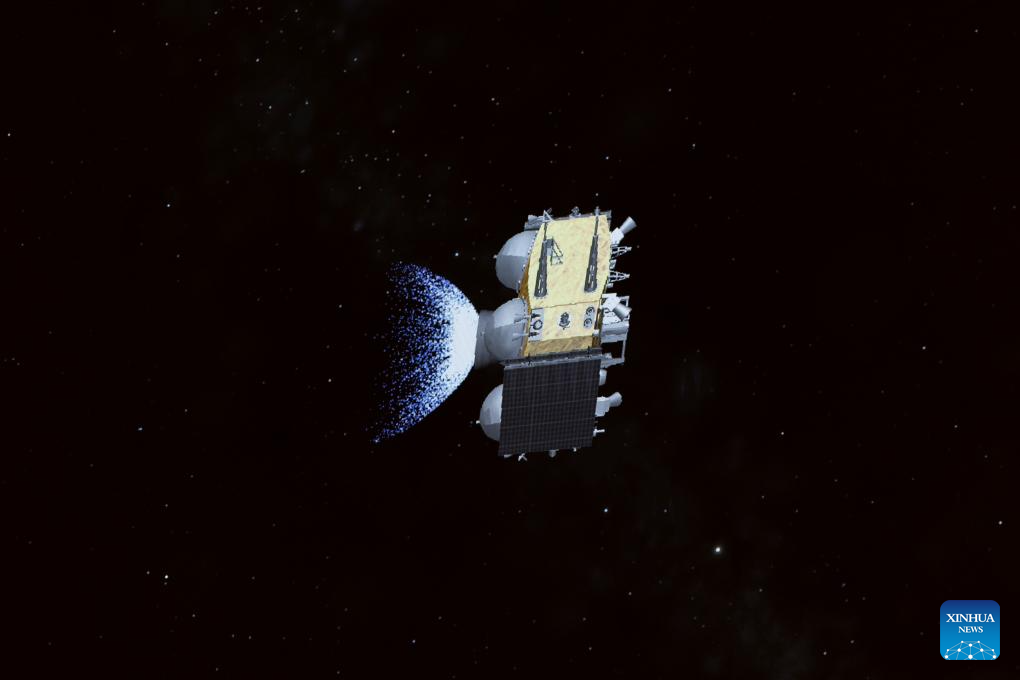US-China space cooperation could help fight climate change


China's recent retrieval of the first-ever samples from the far side of the moon has renewed talks about the possibilities of the United States and China joining in space-based research programs aimed at addressing global challenges, particularly climate change.
"The US and China each have very innovative space programs, and one area, for example, where the US and China could work together today would be space-based solar," Daniel Kammen, a professor of energy at the University of California, Berkeley, and founding director of the university's Renewable and Appropriate Energy Laboratory, told China Daily.
Space-based solar power, a concept involving the collection of solar energy in outer space via satellites and its distribution to Earth, has been gaining traction globally. As countries worldwide invest in research and development for the technology, international organizations are simultaneously pushing for net-zero carbon emissions by 2050.
The decreasing costs associated with launching materials into space have made the idea of deploying large, kilometer-square, mylar solar panels — which beam power back to Earth using microwaves — increasingly feasible.
Kammen, who was a coordinating lead author for the Intergovernmental Panel on Climate Change's Nobel Peace Prize-winning report in 2007, suggested that the US and China could challenge each other to collaborate on making space-based solar a reality.
He emphasized the continuous nature of this energy source: "Space-based solar is on 24/7. There is no nighttime in space. And so, adding space-based solar could be beaming power to Los Angeles to Beijing, to Guangzhou to Shenzhen to San Francisco."
Both nations already have made significant strides in this field. In the United States, Caltech's space solar power prototype, launched into orbit last year, has successfully demonstrated its ability to wirelessly transmit power in space and beam detectable power to Earth for the first time.
Meanwhile, NASA is developing technologies that will indirectly benefit space-based solar power, including projects focused on autonomous systems, wireless power beaming and in-space servicing, assembly and manufacturing, according to a NASA report early this year.
China, for its part, has achieved a milestone in its efforts to build a space solar power station in 2022. The China Academy of Space Technology has plans for a space high-voltage transfer and wireless power transmission experiment to be conducted in low Earth orbit by 2028, as outlined in its 2022 publication in the journal China Space Science and Technology.
Kammen acknowledged the political sensitivities surrounding such collaboration, particularly regarding data transfers and information-sharing. Despite those challenges, he saw opportunities for cooperation in other areas as well, such as fusion power.
He cited the advanced research being conducted at Tsinghua University and China's fusion reactor as potential areas for joint efforts in deployment and new research.
Drawing inspiration from popular culture, Kammen referred to the movie The Martian, in which a stranded American astronaut is rescued through a joint effort between the US and China. He saw the fictional scenario as an example of how the two nations could work together in reality, combining their respective technological strengths to achieve common goals.
"There's an opportunity to work peacefully together in space, to show that no matter who's going to be on the moon next, we have a chance to do clean energy in space as a bridge," said Kammen. Both countries have interests in lunar exploration, with the discovery of significant water ice on the moon opening up new possibilities. Potentially high-value materials on the moon, as well as resources on Mars and asteroids, present further opportunities for joint ventures that could benefit both nations while protecting their individual intellectual property, he said.
"That's an exciting opportunity," said Kammen, and stressed the urgency of doing so. "We're going to need those breakthroughs because both the US and China are behind schedule to meet their climate goals," he said.
The US has aimed to cut emissions in half by 2030, and the Chinese goal is to realize carbon neutrality by 2060.
































